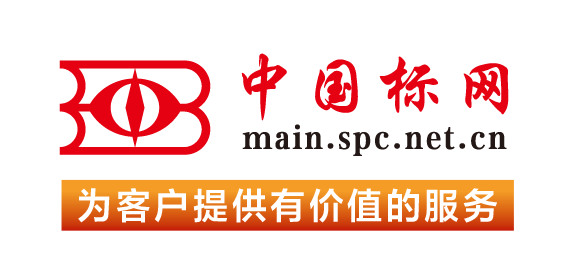【国外标准】 Standard Practice for Emergency Joining of Booms with Incompatible Connectors
本网站 发布时间:
2024-02-28
开通会员免费在线看70000余条国内标准,赠送文本下载次数,单本最低仅合13.3元!还可享标准出版进度查询、定制跟踪推送、标准查新等超多特权!
查看详情>>
适用范围:
3.1 The use of this practice for the emergency joining of booms will not guarantee the effective performance of the joined boom sections, since each boom design and the environmental conditions of each incident govern the overall performance.3.2 Historically, different types of end connectors have been produced. This practice addresses the operational need to connect different types, during spill incidents. (Warning—Use of this practice with similar or different sizes of boom may cause the transmission of unwanted loading such as, tension loading and bending moments on certain boom parts resulting in possible premature failure of the containment system.)3.3 There are a wide range of boom connector configurations presently in use. These connectors were based upon some or all of the following design criteria:3.3.1 Connect and transfer tensile loads between boom sections,3.3.2 Minimize oil leakage between boom sections,3.3.3 Be easily connectable in the presence of dirt, oil or ice, or a combination thereof,3.3.4 Be quickly and easily connected and disconnected, in and out of the water,3.3.5 Maintain boom performance (freeboard, heave response, conformance, stability, and so forth),3.3.6 Be unaffected by temperature extremes,3.3.7 Have no protruding parts that could snag, injure, or puncture,3.3.8 Be light weight and buoyant,3.3.9 Be operatively symmetrical,3.3.10 Require no special tools for installation or removal,3.3.11 Require no loose parts for connection,3.3.12 Extend to the full height and draft of the boom,3.3.13 Resist distortion (that is, winding boom on a reel), and3.3.14 Be inherently safe to personnel.1.1 This practice provides a standard practice for the joining of oil spill containment boom connectors in emergencies.1.2 The use of this connection method may adversely affect the total tensile strength of the connected booms.1.3 These criteria are intended to define mating requirements that will allow the emergency or occasional connection of unlike connectors.1.4 This practice is not intended to replace Specification F962.1.5 This practice does not address the compatibility of spill control equipment with spill products. It is the user's responsibility to ensure that any equipment selected is compatible with the anticipated spilled material.1.6 There is no guarantee that all of the connectors in use today can accept the holes spaced as required without interfering with existing bolt holes or other connector features.1.7 The values stated in either SI units or inch-pound units are to be regarded separately as standard. The values stated in each system may not be exact equivalents; therefore, each system shall be used independently of the other. Combining values from the two systems may result in non-conformance with the standard. See Note 5 in Fig. 1—dimensions A and B are critical.FIG. 1 Side View of a Typical Connector1.8 This standard does not purport to address all of the safety concerns, if any, associated with its use. It is the responsibility of the user of this standard to establish appropriate safety, health, and environmental practices and determine the applicability of regulatory limitations prior to use. For a specific precautionary statement, see 3.2.1.9 This international standard was developed in accordance with internationally recognized principles on standardization established in the Decision on Principles for the Development of International Standards, Guides and Recommendations issued by the World Trade Organization Technical Barriers to Trade (TBT) Committee.
标准号:
ASTM F1657/F1657M-96(2018)
标准名称:
Standard Practice for Emergency Joining of Booms with Incompatible Connectors
英文名称:
Standard Practice for Emergency Joining of Booms with Incompatible Connectors标准状态:
Active-
发布日期:
-
实施日期:
出版语种:
- 推荐标准
- ASTM 51401-21 Standard Practice for Use of a Dichromate Dosimetry System
- ASTM 51956-21 Standard Practice for Use of a Thermoluminescence-Dosimetry System (TLD System) for Radiation Processing
- ASTM A1010/A1010M-24 Standard Specification for Higher-Strength Martensitic Stainless Steel Plate, Sheet, and Strip
- ASTM A1016/A1016M-24 Standard Specification for General Requirements for Ferritic Alloy Steel, Austenitic Alloy Steel, and Stainless Steel Tubes
- ASTM A105/A105M-24 Standard Specification for Carbon Steel Forgings for Piping Applications
- ASTM A1064/A1064M-24 Standard Specification for Carbon-Steel Wire and Welded Wire Reinforcement, Plain and Deformed, for Concrete
- ASTM A108-24 Standard Specification for Steel Bar, Carbon and Alloy, Cold-Finished
- ASTM A1080/A1080M-24 Standard Practice for Hot Isostatic Pressing of Steel, Stainless Steel, and Related Alloy Castings
- ASTM A1090/A1090M-19(2024) Standard Specification for Forged Rings and Hollows for Use as Base Plates in Power Transmission Structures
- ASTM A1115/A1115M-24 Standard Practice for Construction of Mechanically Stabilized Earth Walls with Inextensible Soil Reinforcement
- ASTM A1128-24 Standard Specification for Stainless Steel Shielded, Rubber Gasketed Couplings Having an Integral Restraint Feature for Joining Hubless Cast Iron Soil Pipes and Fittings Where External Restraint Is Required
- ASTM A179/A179M-24 Standard Specification for Seamless Cold-Drawn Low-Carbon Steel Heat-Exchanger and Condenser Tubes
- ASTM A234/A234M-24 Standard Specification for Piping Fittings of Wrought Carbon Steel and Alloy Steel for Moderate and High Temperature Service
- ASTM A242/A242M-24 Standard Specification for High-Strength Low-Alloy Structural Steel
- ASTM A249/A249M-24a Standard Specification for Welded Austenitic Steel Boiler, Superheater, Heat-Exchanger, and Condenser Tubes
 我的标准
我的标准 购物车
购物车 400-168-0010
400-168-0010














